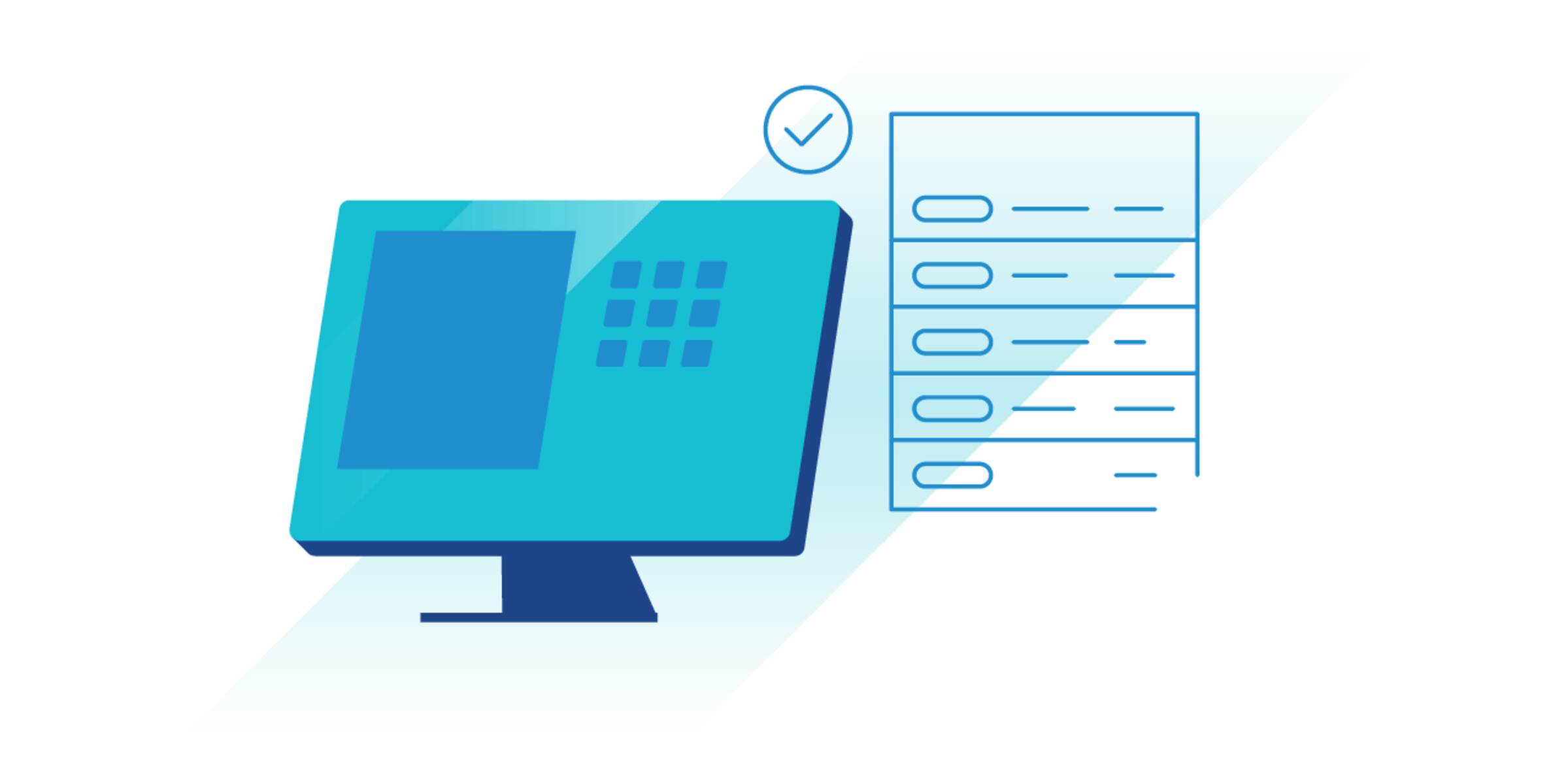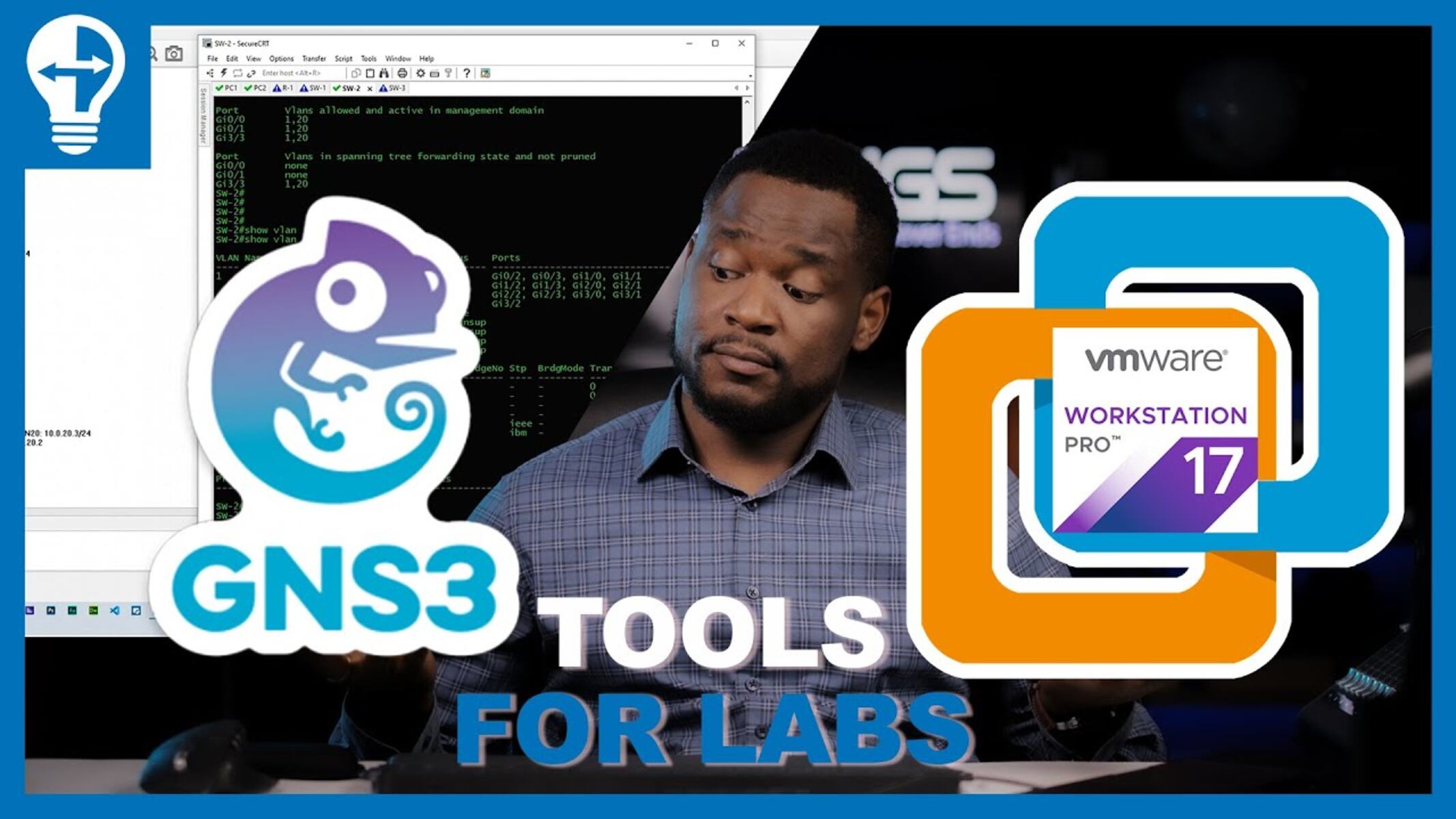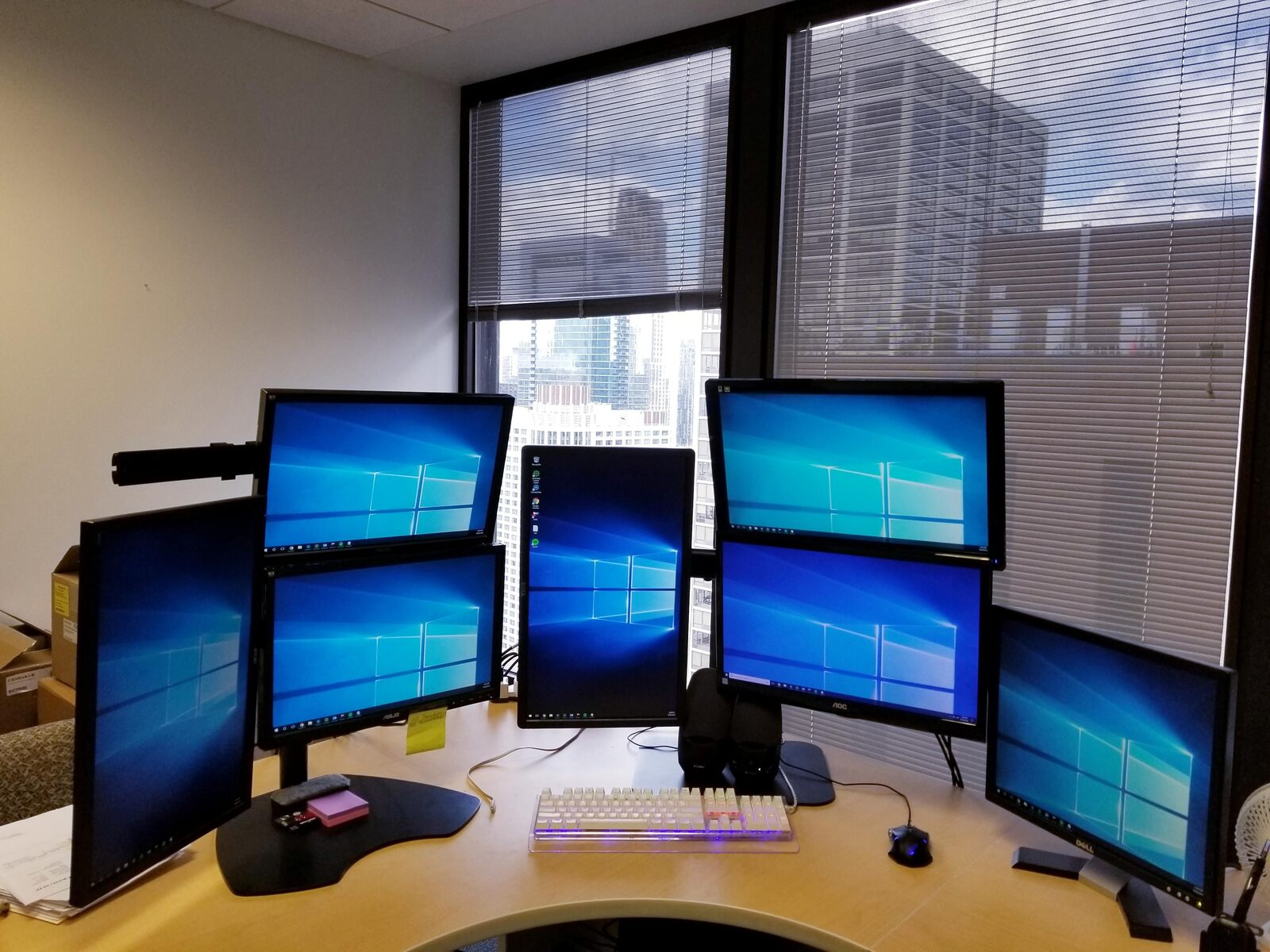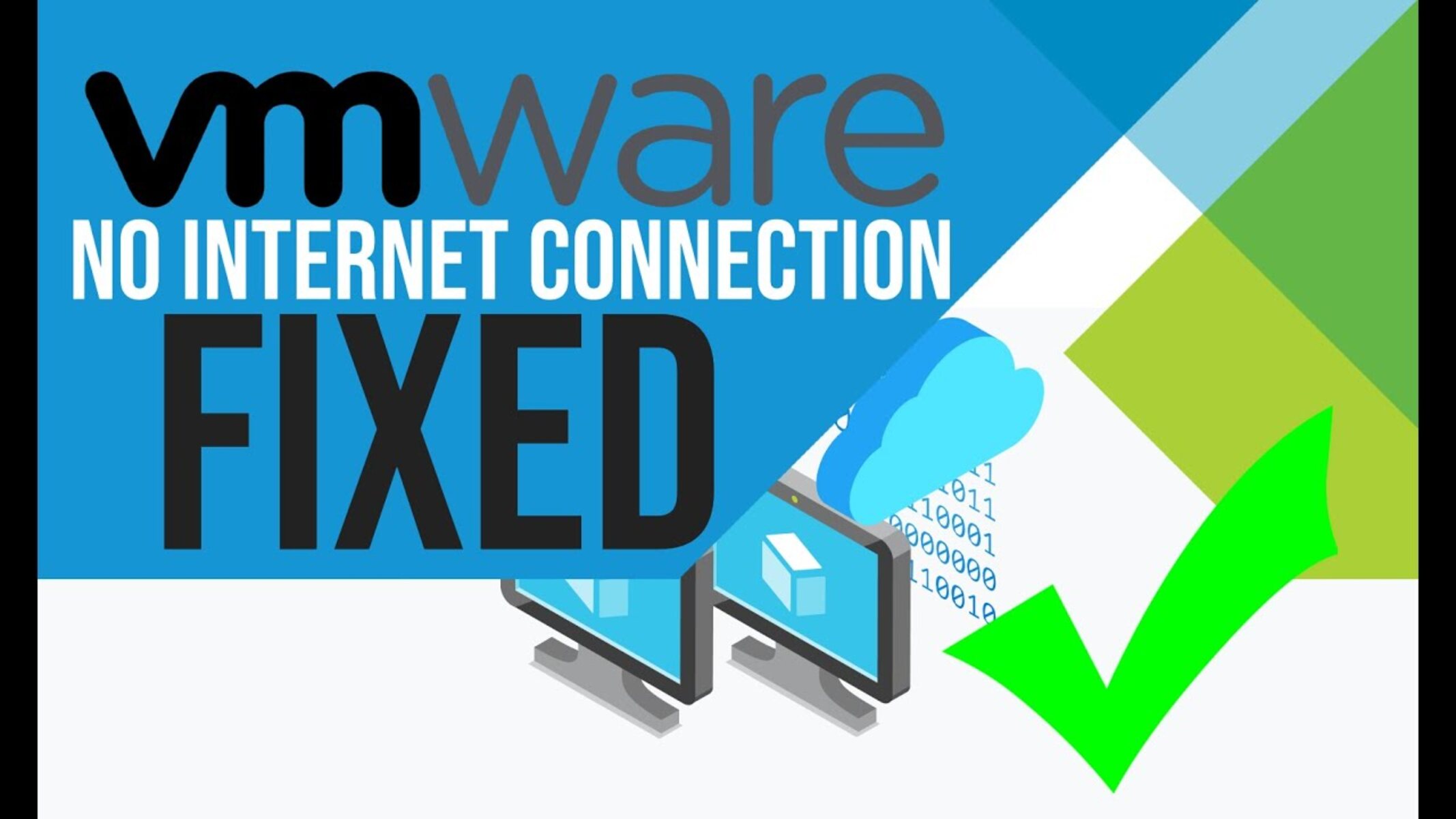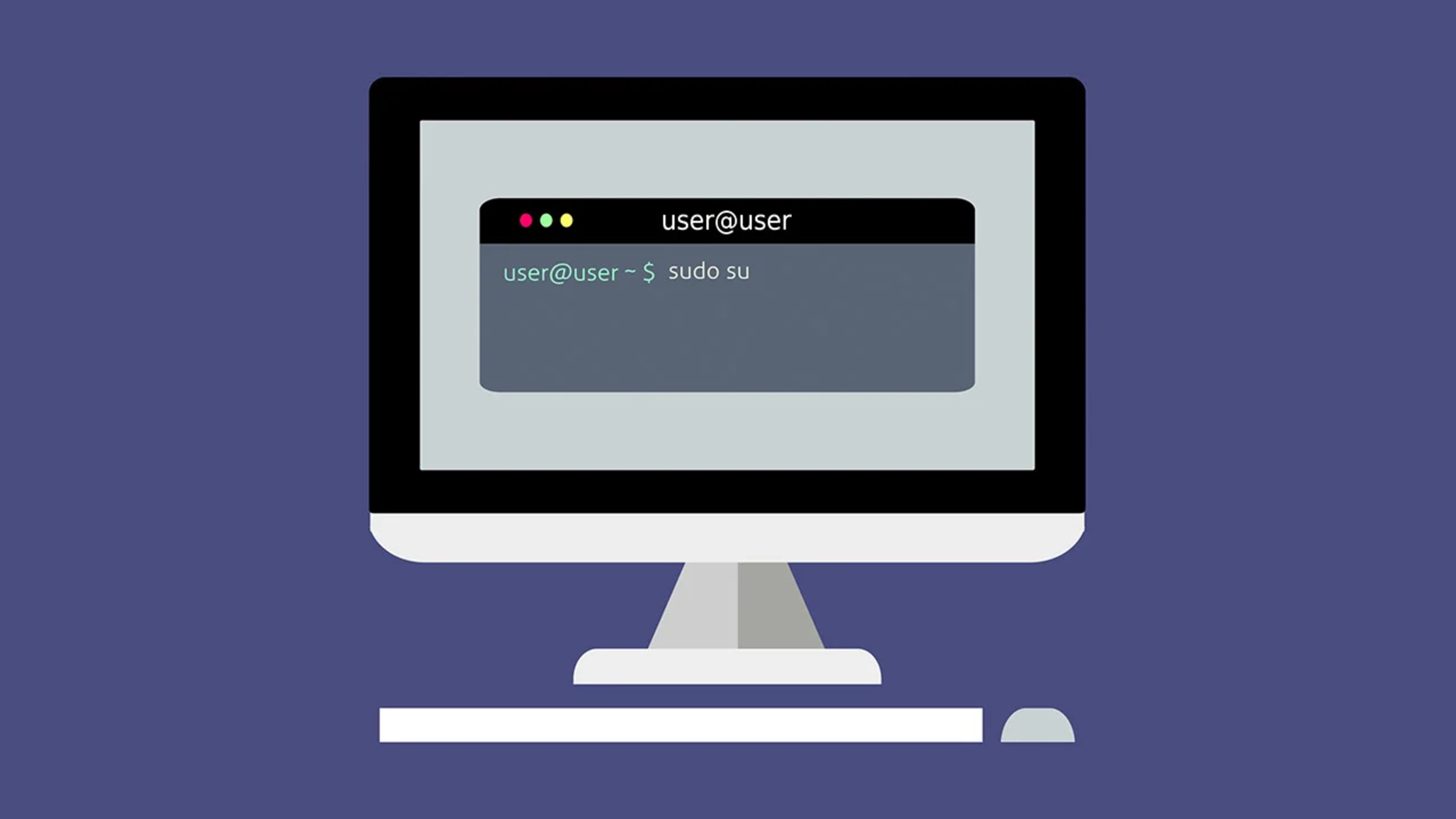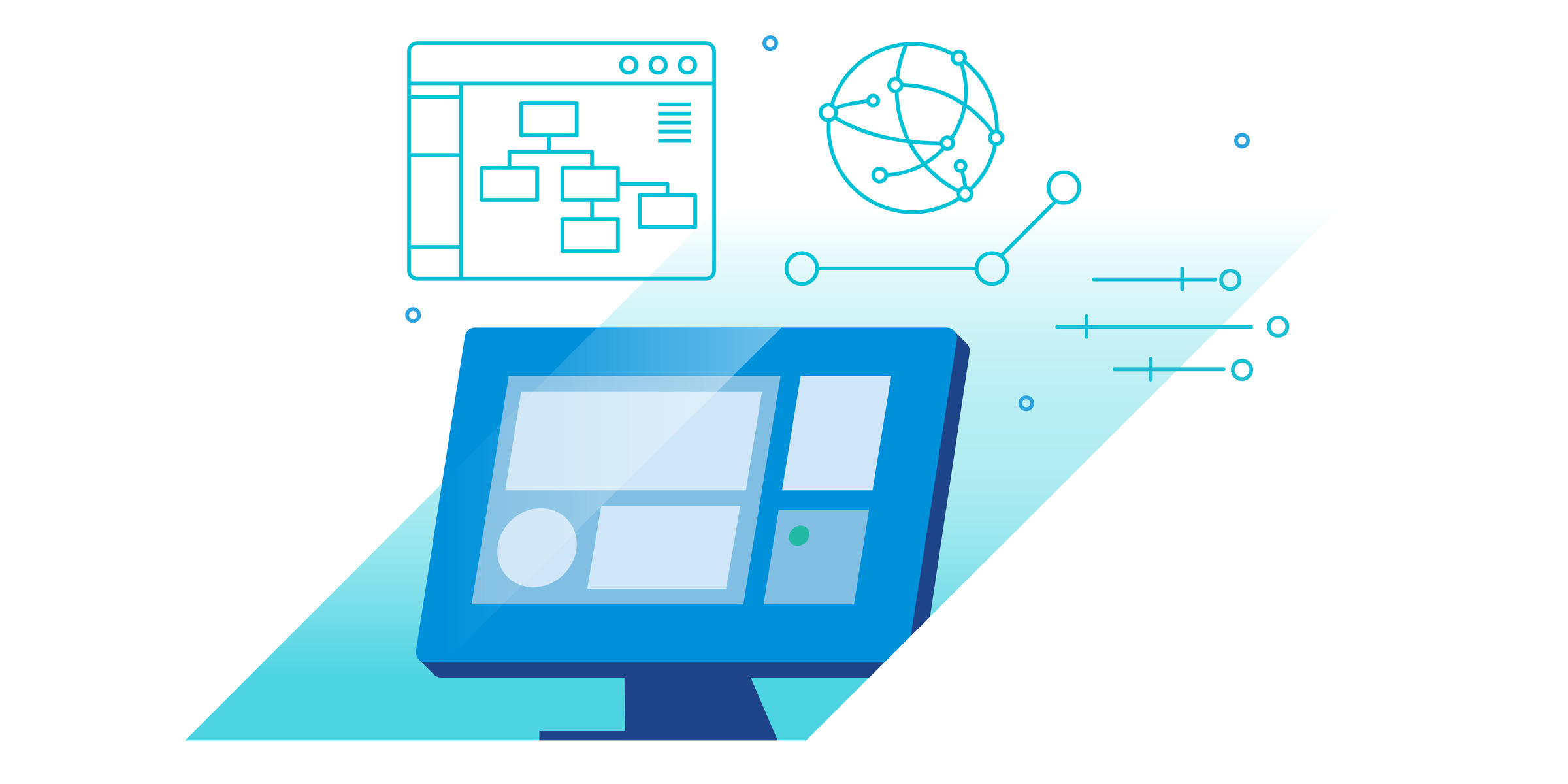Introduction
Welcome to the world of virtualization workstations! In today’s rapidly advancing technological landscape, virtualization has emerged as a game-changing concept that revolutionizes the way we use computers. By combining the power of virtualization with the efficiency of a workstation, users can experience enhanced productivity, increased flexibility, and improved cost-effectiveness.
So, what exactly is virtualization? And what does the term “workstation” refer to in this context? In this article, we will explore the concept of virtualization, delve into the definition and significance of a workstation, and understand how these two concepts come together to form a virtualization workstation.
Virtualization is the process of creating a virtual version or representation of a physical resource, such as a computer, server, operating system, or network. It allows multiple operating systems or applications to run on a single physical machine, effectively maximizing resource utilization and minimizing costs. By creating separate virtual environments, virtualization enables users to isolate applications and data, streamline deployment, and optimize performance.
On the other hand, a workstation is a high-performance computer designed for professional use. It typically boasts top-of-the-line hardware components, such as powerful processors, ample memory, and robust graphics capabilities. Workstations are optimized to handle resource-intensive tasks, such as 3D modeling, video editing, software development, and data analysis. They provide unmatched computing power and reliability, making them ideal for demanding workloads and applications.
Now, imagine harnessing the power of virtualization and combining it with the capabilities of a workstation. This fusion gives birth to the concept of a virtualization workstation. It offers a unique and powerful computing environment where multiple virtual machines (VMs) or operating systems can run simultaneously on a single physical workstation. This enables users to efficiently manage and utilize resources, test different software configurations, perform multi-platform development, and seamlessly switch between different operating systems or environments.
Building a virtualization workstation can bring an array of benefits to both professional users and organizations. In the upcoming sections, we will explore these advantages in detail, dive into the workings of a virtualization workstation, discuss essential components, and highlight popular virtualization software and operating systems used in such setups. We will also provide key considerations to keep in mind when building a virtualization workstation.
What is Virtualization?
Virtualization is a technological concept that involves creating a virtual version or representation of a physical resource, such as a computer, server, operating system, or network. It allows for the efficient utilization of resources by running multiple virtual environments on a single physical machine.
At its core, virtualization aims to enhance flexibility, scalability, and cost-effectiveness in computing. By isolating applications and data within separate virtual environments, virtualization enables users to maximize resource utilization and streamline deployment. It eliminates the need for dedicated physical infrastructure for each application or operating system, leading to significant cost savings in terms of hardware and maintenance.
One of the primary types of virtualization is server virtualization, which involves partitioning a physical server into multiple virtual servers, each with its own operating system and set of applications. This allows a single server to function as multiple independent servers, optimizing resource allocation and increasing server efficiency.
Virtualization also extends to desktops, where users can access virtual desktop environments that run on a server or data center. These virtual desktops can be accessed from any device with an internet connection, providing users with mobility and freedom in their work. This approach simplifies desktop management, improves security, and enables efficient deployment and updating of desktop environments.
In addition, virtualization plays a crucial role in network infrastructure. Network virtualization allows for the creation of logical networks independent of the physical infrastructure. This enables easier network management, efficient resource allocation, and the ability to quickly adapt to changing network demands or configurations.
Application virtualization is another aspect of virtualization, enabling the separation of applications from the underlying operating system. This allows for the efficient utilization of computing resources, as multiple applications can run on a single physical machine without conflicts.
Overall, virtualization offers numerous benefits, including increased flexibility, improved resource utilization, enhanced scalability, simplified management, and reduced costs. It has become an integral part of modern computing, empowering organizations and individuals to leverage the power of virtual environments and optimize their technological infrastructure.
What is a Workstation?
A workstation is a powerful computer system specifically designed to handle computationally intensive tasks and complex workloads. It is built with top-of-the-line hardware components to deliver exceptional performance, reliability, and productivity.
Workstations are typically used by professionals in fields such as engineering, architecture, graphic design, animation, scientific research, and software development. These industries often require substantial computing power to handle resource-intensive applications, such as 3D modeling, video editing, simulations, and data analysis.
What sets workstations apart from regular desktop computers is their hardware configuration and optimization. They are equipped with high-performance processors, ample memory, dedicated graphics cards, and fast storage solutions. The emphasis is on delivering superior processing capabilities, efficient multitasking, and seamless handling of complex calculations and data manipulation tasks.
Workstations also prioritize stability and reliability. They undergo rigorous testing and quality assurance processes to ensure maximum uptime and minimal system failures. This is crucial for professionals who depend on their computer systems to complete critical tasks within tight deadlines.
In addition to hardware, workstations often feature advanced cooling systems and noise reduction technologies. These elements are essential to maintain optimal performance and create a comfortable and quiet work environment.
Workstations are not limited to desktop configurations. They can also exist as high-end laptops that offer comparable performance to their desktop counterparts. These mobile workstations provide the flexibility to work on resource-intensive projects while on the move, making them highly sought-after by professionals who require mobility without sacrificing computing power.
When it comes to operating systems, workstations are typically compatible with both Windows and Linux platforms. Different industries may have specific software requirements, and workstations are designed to support a wide range of applications and operating systems efficiently.
Overall, workstations are optimized to deliver superior performance, stability, and reliability for demanding professional workloads. They are an essential tool for professionals who require the utmost computing power and efficiency to excel in their fields.
Virtualization Workstation: Combining the Two
Virtualization workstations combine the power and capabilities of virtualization technology with the high-performance hardware of a workstation. This creates a unique computing environment that allows users to run multiple virtual machines (VMs) or operating systems simultaneously on a single physical workstation.
By combining virtualization and workstation technologies, virtualization workstations offer a variety of benefits and use cases. They provide an efficient and cost-effective solution for professionals who need to work with different operating systems, test software configurations, or run resource-intensive applications.
One of the key advantages of a virtualization workstation is the ability to seamlessly switch between different operating systems or environments. This is especially useful for developers who need to test their software on multiple platforms or IT professionals who require access to different operating systems for troubleshooting or compatibility testing.
Virtualization workstations also provide a streamlined method for managing resources. By running multiple virtual machines on a single physical workstation, users can maximize resource utilization and reduce the need for additional hardware. This can result in significant cost savings, as there is no longer a requirement for separate physical machines for each task or operating system.
Furthermore, virtualization workstations enable isolated environments for testing and development purposes. Users can create virtual machines with specific configurations and settings, ensuring that their software or applications run smoothly without interfering with the host operating system. This allows for efficient testing and debugging, as any issues or complications can be isolated within the virtual machine without affecting the rest of the workstation.
Professionals who require computationally intensive tasks can benefit greatly from virtualization workstations. By assigning specific resources to each virtual machine, users can allocate processor cores, memory, and storage as needed, ensuring optimal performance for each virtual environment. This allows for efficient utilization of computing power, allowing professionals to tackle demanding workloads more effectively.
In addition, virtualization workstations offer enhanced flexibility and mobility. Virtual machines can be easily migrated between different physical workstations or even to cloud-based environments, allowing professionals to access their work and continue seamlessly across various devices and locations.
Overall, virtualization workstations provide an innovative solution for professionals who require the versatility of virtualization technology combined with the high-performance capabilities of a workstation. Whether it’s running multiple operating systems, testing software, or managing computationally demanding tasks, virtualization workstations offer a powerful platform for improved productivity, cost savings, and streamlined resource management.
Benefits of a Virtualization Workstation
Virtualization workstations offer a range of benefits to professionals and organizations across various industries. By combining the power of virtualization with high-performance workstation hardware, these systems provide numerous advantages that enhance productivity, flexibility, and cost-efficiency.
One of the primary benefits of a virtualization workstation is the ability to run multiple virtual machines (VMs) or operating systems on a single physical workstation. This enables professionals to seamlessly switch between different environments without the need for multiple physical machines. Whether it’s testing software configurations, developing applications, or working with different operating systems, the versatility of a virtualization workstation allows for efficient multitasking and workflow optimization.
One key advantage of virtualization workstations is the efficient use of resources. By running multiple VMs on a single physical machine, users can maximize resource utilization and reduce the need for additional hardware. This not only saves costs associated with purchasing and maintaining multiple physical systems but also reduces energy consumption and physical footprint.
Virtualization workstations also offer enhanced flexibility and mobility. Virtual machines can be easily transferred between different physical workstations or even to cloud-based environments. This allows professionals to access their work and continue seamlessly across various devices and locations. It also facilitates collaboration, as multiple team members can access and work on the same virtual environment simultaneously.
Another significant advantage is the isolation of environments provided by virtualization workstations. Professionals can create and configure virtual machines to reproduce specific software or development environments, ensuring that their applications run smoothly in a controlled setting. This allows for efficient testing, debugging, and troubleshooting without any impact on the host operating system or other virtual machines.
Virtualization workstations also contribute to enhanced security and data protection. By isolating applications and data within separate virtual environments, the risk of cross-contamination or data breaches is minimized. In the event of any security vulnerability or compromise in one virtual machine, the impact on the rest of the system can be contained, preventing data loss or unauthorized access to sensitive information.
Cost savings are another notable benefit of virtualization workstations. By consolidating multiple virtual machines onto a single physical system, organizations can reduce hardware expenditure, maintenance costs, and energy consumption. Additionally, the ability to easily migrate virtual machines between different physical workstations or cloud infrastructure allows for resource scalability and the optimization of IT infrastructure spending.
Lastly, virtualization workstations provide an excellent platform for disaster recovery and business continuity planning. By encapsulating virtual machines in portable files, professionals can create backups and easily restore the entire system in the event of hardware failure, system crashes, or other unforeseen circumstances. This ensures minimal downtime and the ability to quickly resume operations.
Overall, virtualization workstations offer a multitude of benefits, including improved productivity, resource optimization, flexibility, enhanced security, cost savings, and disaster recovery capabilities. These advantages make virtualization workstations a valuable investment for professionals and organizations looking to optimize their computing environments.
How Does a Virtualization Workstation Work?
A virtualization workstation functions by combining virtualization technology with dedicated workstation hardware to create a powerful computing environment. It allows users to run multiple virtual machines (VMs) or operating systems simultaneously on a single physical workstation.
The virtualization layer plays a crucial role in the workings of a virtualization workstation. This layer, also known as the hypervisor, is responsible for creating, managing, and allocating the necessary resources for each virtual machine. It abstracts the underlying hardware, enabling multiple virtual machines to share and utilize the physical resources of the workstation efficiently.
There are two main types of hypervisors used in virtualization workstations: Type 1 (bare-metal) and Type 2 (hosted).
- A Type 1 hypervisor is installed directly on the physical hardware, replacing the traditional operating system. This hypervisor directly manages and accesses the hardware resources, providing superior performance and scalability. Examples of Type 1 hypervisors include VMware ESXi, Microsoft Hyper-V, and Citrix XenServer.
- A Type 2 hypervisor, on the other hand, is installed on top of an existing operating system. It runs as an application and relies on the host operating system for hardware access. While Type 2 hypervisors may introduce some overhead, they are easier to set up and suitable for desktop virtualization. Popular examples of Type 2 hypervisors include Oracle VirtualBox and VMware Workstation.
Once the hypervisor is in place, users can create and manage virtual machines as needed. Each virtual machine operates as an independent, isolated instance, with its own operating system, applications, and resources. The hypervisor manages the allocation of CPU, memory, storage, and network resources to ensure optimal performance and resource utilization for each virtual machine.
Virtual machines can be created from scratch or from pre-configured templates. Users can specify the desired operating system, allocate hardware resources, and configure network settings for each virtual machine. This allows for customization and flexibility in creating virtual environments tailored to specific requirements, whether it’s for development, testing, or any other use case.
Once the virtual machines are set up and running, users can interact with them using remote desktop connections or virtual machine consoles. This allows for seamless switching between virtual machines or host operating systems, providing a full desktop experience within each virtual environment.
Additionally, virtualization workstations often come equipped with management tools that simplify the management and monitoring of virtual machines. These tools allow users to easily clone virtual machines, take snapshots for backups, allocate resources, and manage virtual machine templates, among other administrative tasks.
Overall, the combination of the hypervisor layer, dedicated workstation hardware, and virtualization software allows for the efficient functioning of a virtualization workstation. It provides the capabilities to run multiple virtual machines, optimize resource allocation, and enable seamless interaction with each virtual environment.
Components of a Virtualization Workstation
A virtualization workstation consists of several key components that work together to create a powerful computing environment capable of running multiple virtual machines (VMs) or operating systems simultaneously. These components include the hardware, the hypervisor, and the virtualization software.
1. Hardware: The hardware of a virtualization workstation plays a crucial role in its performance and capabilities. It typically includes a powerful processor, ample memory (RAM), fast storage solutions (such as solid-state drives or NVMe drives), and a reliable network interface. The choice of hardware components should be based on the specific requirements of the virtual machines and workloads that will be running on the workstation.
2. Hypervisor: The hypervisor, also known as the virtual machine monitor (VMM), is the software layer that enables the creation, management, and allocation of resources for each virtual machine. There are different types of hypervisors, including Type 1 (bare-metal) and Type 2 (hosted) hypervisors. The choice of hypervisor depends on factors such as performance, scalability, and management requirements.
3. Virtualization Software: Virtualization software provides the tools and interfaces necessary to create, configure, manage, and monitor virtual machines. Popular virtualization software options for workstations include VMware Workstation, Oracle VirtualBox, and Microsoft Hyper-V. These software solutions allow users to easily create and manage virtual machines, allocate resources, and perform tasks such as cloning, snapshotting, and migrating virtual machines.
4. Operating System: The virtualization workstation itself requires an operating system to function. This can be a workstation-class operating system, such as Windows 10 Pro or macOS, or a server-class operating system like Windows Server or a Linux distribution. The choice of operating system depends on the specific requirements of the users and the virtual machines being run on the workstation.
5. Networking: Networking is a critical component of a virtualization workstation, as it enables communication between the host machine and the virtual machines, as well as between the virtual machines themselves. It is essential to have a reliable network interface and appropriate networking configurations to ensure optimal performance and connectivity for the virtual machines.
6. Management Tools: Management tools provide a user-friendly interface to manage and monitor virtual machines and the virtualization workstation as a whole. These tools can include centralized management consoles, performance monitoring software, and backup and recovery solutions. They simplify administrative tasks, such as resource allocation, cloning, and snapshot management.
7. Backup and Disaster Recovery: Establishing a backup and disaster recovery strategy is crucial for a virtualization workstation. Regular backups of virtual machines, as well as the host system, should be performed to ensure data integrity and the ability to recover in the event of hardware failure or system crashes. This includes backing up virtual machine configurations, data, and any custom settings.
In summary, a virtualization workstation comprises a combination of hardware components, including a powerful processor, ample memory, fast storage, and a reliable network interface. It utilizes a hypervisor, such as a Type 1 or Type 2 hypervisor, to manage and allocate resources for virtual machines. Virtualization software, along with an operating system and networking capabilities, provide the tools and interfaces to create and manage virtual machines. Additionally, management tools and backup and disaster recovery strategies are essential components to ensure efficient administration and data protection in the virtualization workstation environment.
Operating Systems for Virtualization Workstations
Operating systems play a critical role in virtualization workstations as they provide the platform on which virtual machines (VMs) and virtualization software run. When setting up a virtualization workstation, it is important to choose an operating system that is compatible with the virtualization software and meets the specific requirements of the virtual machines and workloads.
There are several operating systems commonly used in virtualization workstations:
1. Windows: Windows operating systems, such as Windows 10 Pro or Windows Server editions, are popular choices for virtualization workstations. They offer a familiar interface, extensive hardware support, and compatibility with a wide range of virtualization software. Windows Server editions provide additional capabilities and features suitable for enterprise-level virtualization environments.
2. macOS: Apple’s macOS operating system is widely used in virtualization workstations for those working in the Apple ecosystem. Apple’s native virtualization software, such as Hyper-V in macOS, allows users to create and run virtual machines on their Mac computers without the need for third-party software. This is particularly useful for developers and designers who need to test their applications on different operating systems.
3. Linux: Linux distributions, such as Ubuntu, CentOS, or Fedora, are popular choices for virtualization workstations. Linux offers excellent flexibility, stability, and compatibility with a wide range of virtualization software. It is often preferred by IT professionals, developers, and those working with open-source technologies due to its robustness and customization options.
4. Hypervisor-Specific Operating Systems: Some virtualization software requires specific operating systems to function optimally. For example, VMware ESXi is a Type 1 hypervisor that requires a custom installation on bare-metal hardware, running as a dedicated operating system. Similarly, Citrix XenServer and Microsoft Hyper-V have their own specific operating systems designed for optimal virtualization performance.
Choosing the right operating system for a virtualization workstation depends on various factors:
– Compatibility: Ensure that the chosen operating system is compatible with the virtualization software you plan to use. Among other factors, consider hardware support, drivers, and software dependencies.
– Familiarity and Expertise: Consider your level of comfort and expertise with the operating system. Opting for an OS that you are familiar with can make the setup and management of the virtualization workstation smoother and more efficient.
– Hardware Requirements: Some operating systems have specific hardware requirements or limitations that need to be considered. Ensure that the chosen OS can fully utilize the resources of your workstation’s hardware to support the virtualization needs.
– Licensing: Evaluate the licensing requirements and costs associated with the operating system. Some operating systems have licensing restrictions, especially in commercial and enterprise environments.
– Application Compatibility: Consider the compatibility of the operating system with the specific applications or software that will be running in the virtual machines. Ensure that all necessary software and tools are supported on the chosen operating system.
In summary, the choice of operating system for a virtualization workstation depends on factors such as compatibility, familiarity, hardware requirements, licensing, and application compatibility. Windows, macOS, Linux, and hypervisor-specific operating systems are common options. Selecting the right operating system is crucial in establishing a stable and efficient virtualization environment that meets the specific needs and requirements of the users and their virtual machines.
Popular Virtualization Software for Workstations
Virtualization software is a key component of a virtualization workstation, as it enables the creation, management, and operation of virtual machines (VMs). There are several popular virtualization software options available for workstations, each offering unique features and functionalities. Let’s explore some of the most popular choices:
1. VMware Workstation: VMware Workstation is one of the most well-known and widely used virtualization software for workstations. It provides powerful features, including the ability to create and run multiple VMs simultaneously, seamless integration with host hardware and peripherals, and support for various operating systems. With its user-friendly interface and advanced networking capabilities, VMware Workstation is popular among professionals and developers for testing, development, and virtualized environments.
2. Oracle VirtualBox: Oracle VirtualBox is an open-source virtualization software that is available for free. It supports multiple host operating systems and allows users to create and run VMs with various operating systems, including Windows, macOS, Linux, and more. VirtualBox offers features like snapshotting, seamless mode, and the ability to share folders between the host and guest operating systems. Its user-friendly interface and extensive community support make it a popular choice, especially for individual users and small-scale virtualization environments.
3. Microsoft Hyper-V: Hyper-V is Microsoft’s virtualization platform that comes bundled with certain editions of Windows, such as Windows 10 Pro and Windows Server. It provides a reliable and robust virtualization solution for workstations and offers features like live migration, high availability, and support for various operating systems. Hyper-V integrates well with other Microsoft tools and technologies, making it an ideal choice for those in a Windows-centric environment.
4. Parallels Desktop: Parallels Desktop is a virtualization software specifically designed for macOS. It allows users to run Windows, Linux, and other operating systems on their Mac computers simultaneously, providing seamless integration and performance. Parallels Desktop has a strong focus on graphical performance, making it a preferred choice for professionals in design, 3D modeling, and other graphics-intensive industries. It offers features like Coherence mode, which allows users to run Windows applications seamlessly on their Mac desktop.
5. XenServer: XenServer, developed by Citrix, is a leading virtualization platform used in both server and workstation environments. It is a Type 1 hypervisor that offers advanced features like live migration, high availability, and centralized management. XenServer provides robust security and resource management capabilities, making it a popular choice for organizations that require enterprise-level virtualization solutions for both servers and workstations.
6. KVM (Kernel-based Virtual Machine): KVM is a virtualization infrastructure for the Linux kernel. It is integrated directly into the Linux operating system, providing excellent performance and scalability. KVM supports multiple guest operating systems and offers features such as live migration, snapshotting, and resource management. KVM is often used in server environments but can also be implemented in workstations for Linux users and developers.
In summary, virtualization software such as VMware Workstation, Oracle VirtualBox, Microsoft Hyper-V, Parallels Desktop, XenServer, and KVM offer a range of features and functionalities for virtualization workstations. The choice of virtualization software depends on factors such as compatibility with the host operating system, required features, performance needs, and budget considerations. These popular software options cater to different user requirements and provide powerful tools to create and manage virtual machines in a workstation environment.
Considerations for Building a Virtualization Workstation
Building a virtualization workstation requires careful consideration of various factors to ensure optimal performance, compatibility, and efficiency. Whether you are setting up a workstation for personal use or for an organization, here are some key considerations to keep in mind:
1. Hardware Requirements: Choose hardware components that can handle the resource demands of virtualization. Consider factors such as the processor (preferably a multi-core CPU), ample memory (RAM), fast storage options (such as solid-state drives or NVMe drives), and a reliable network interface. The hardware specifications should align with the requirements of the virtual machines and workloads that will be running on the workstation.
2. Hypervisor Selection: Selecting the appropriate hypervisor is crucial. Consider factors such as performance, scalability, management features, and compatibility with the intended use cases. Type 1 (bare-metal) hypervisors, like VMware ESXi and Microsoft Hyper-V, offer superior performance and are ideal for enterprise-level virtualization. Type 2 (hosted) hypervisors, such as VMware Workstation and Oracle VirtualBox, are better suited for individual or small-scale virtualization needs.
3. Virtualization Software: Ensure that the chosen virtualization software supports the desired operating systems and offers the required features. Consider factors like compatibility, ease of management, available support, and resource utilization. Investigate the licensing models and costs associated with the virtualization software to ensure it aligns with your budget and requirements.
4. Operating System Compatibility: Choose an operating system that is compatible with both the virtualization software and any specific applications or software required for your work. Consider the hardware support, drivers, and software dependencies when selecting the operating system for your virtualization workstation.
5. Networking Considerations: Plan the networking infrastructure to meet the needs of your virtualization setup. Consider factors like network bandwidth, security requirements, and the ability to connect the virtual machines to the external network or the internet. Proper network configuration ensures smooth communication between the virtual machines, the host system, and external devices.
6. Storage and Backup: Ensure that your virtualization workstation has sufficient storage capacity to handle the virtual machines and their associated files. Consider implementing a backup and disaster recovery strategy to protect the virtual machines and critical data in case of hardware failure or system crashes. Regularly backing up virtual machine configurations and data is essential to ensure business continuity.
7. Performance Monitoring and Management: Choose appropriate tools and solutions to monitor the performance of your virtualization workstation. Monitoring tools can provide insights into resource utilization, performance bottlenecks, and potential issues. Management tools can aid in tasks such as resource allocation, VM provisioning, and software updates, simplifying administration and improving overall efficiency.
8. Scalability and Future Expansion: Consider the possibility of future expansion and scalability. Determine whether your virtualization workstation can accommodate the anticipated growth in terms of resource requirements and additional virtual machines. It is essential to plan for future needs and consider the potential need for additional hardware, licenses, or software upgrades.
By carefully considering these factors when building a virtualization workstation, you can ensure that it meets your specific requirements, offers optimal performance, and allows for seamless management of virtual machines. A well-planned and properly configured virtualization workstation will provide the foundation for efficient multitasking, resource utilization, and flexibility in your virtual environment.
Conclusion
Virtualization workstations offer a powerful solution for professionals and organizations seeking to optimize their computing environments. By combining the capabilities of virtualization technology with high-performance workstation hardware, virtualization workstations enable users to run multiple virtual machines or operating systems simultaneously on a single physical workstation.
Throughout this article, we explored the concept of virtualization and its benefits, as well as the definition and significance of workstations. We discussed how virtualization workstations combine the two, providing a versatile and efficient platform for professionals with diverse computing needs.
Benefits of virtualization workstations include improved productivity, enhanced resource utilization, flexibility, and cost savings. With the ability to seamlessly switch between different operating systems and environments, professionals can efficiently manage diverse tasks and test various software configurations. By consolidating multiple virtual machines onto a single physical system, organizations can save costs associated with hardware, maintenance, and energy consumption. The isolated environments provided by virtualization workstations allow for efficient testing, development, and troubleshooting without impacting the host operating system or other virtual machines.
We also explored the components of a virtualization workstation, considering the essential hardware, hypervisor, virtualization software, operating systems, networking, management tools, and backup and disaster recovery strategies. Each component plays a crucial role in the overall functioning, performance, and management of a virtualization workstation.
Key considerations when building a virtualization workstation include hardware requirements, hypervisor selection, virtualization software compatibility, operating system considerations, networking needs, storage and backup strategies, performance monitoring and management, and scalability for future expansion.
In conclusion, virtualization workstations provide a powerful computing environment that combines the benefits of virtualization technology and high-performance workstation hardware. They offer enhanced productivity, improved resource utilization, cost savings, and flexibility for professionals and organizations across various industries. By carefully considering the components and requirements when building a virtualization workstation, individuals and businesses can harness the full potential of virtualization technology and optimize their computing environments for efficient multitasking, seamless resource management, and improved overall performance.









